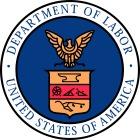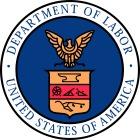
Most U.S. money market funds will begin restructuring their operations beginning in 2014 and throughout 2015 and 2016 as a result of the SEC’s adoption of wide ranging changes to the rules regulating these funds. Since many plan participants invest in money market funds, ERISA plan sponsors, recordkeepers and investment consultants and other advisers will need to plan for operational, contractual, disclosure and other changes in connection with these new rules.
Floating and Stable NAV Funds
One of the biggest rule changes involves how money market funds will be allowed to value their shares. Currently, money market funds generally offer shares at a stable net asset value (“NAV’) of $1.00. Under the SEC’s new money market rules, only government and “retail” money market funds can offer their shares at a stable NAV. Government money market funds are those funds that hold at least 99.5% of their investments in government securities, cash or repurchase agreements collateralized by government securities. Money market funds that don’t qualify to offer shares at a stable NAV because of the nature of their shareholder base (i.e., institutional money market funds) will have to float their NAVs, meaning the share price will fluctuate from day to day.
Retail money market funds are funds that restrict investors only to beneficial owners that are natural persons. A beneficial owner is any person who has direct or indirect, sole or shared voting and/or investment power. Under the new rules, retail money market funds will be required to reasonably conclude that beneficial owners of intermediaries are natural persons. The SEC stated that tax-advantaged savings accounts and trusts, such as (i) participant-directed defined contribution plans; (ii) individual retirement accounts; (iii) simplified employee pension arrangements, and other similar types of arrangements, would qualify for the natural person test. On the other hand, defined benefit plans, endowments and small businesses are not considered “natural persons” and would not be eligible to invest in a retail money market fund.
It is widely expected that the SEC’s new money market rules will result in many changes in fund offerings. For example:
-
Money market funds that currently have both institutional and natural persons as holders may spin off the institutional holders into separate floating NAV funds;
-
Some institutional funds may decide to liquidate or merge with other funds;
-
Some advisers may begin offering new money fund-“like” products that only hold short term securities (60 days or less maturity) and therefore value fund holdings at amortized cost; and
-
Some prime money market funds may change their investment strategies to operate as a government money market fund in order to steer clear of the floating NAV and liquidity fee and gate rules (discussed below).
Effect on ERISA Plans. The SEC provided examples of how funds could satisfy the natural person definition with intermediaries, including through: contractual arrangements, periodic certifications and representations or other verification methods. Accordingly, ERISA service providers who hold fund shares in omnibus accounts may expect to be contacted by retail money market funds to provide these certifications or representations and/or to enter into new agreements with funds for this purpose.
ERISA plan sponsors and investment consultants and advisers will also need to be alert to potential changes to existing money market funds currently offered in plans to which they provide services and/or new fund offerings that may be appealing to and/or better serve the best interests of participants.
Liquidity Fees and Redemption Gates
All money market funds, except government money market funds, will be subject to the SEC’s new rules with respect to the imposition of liquidity (or redemption) fees and redemption gates during periods when a money market fund’s weekly liquid assets dip below certain thresholds. Under these new rules a fund board may impose up to a 2% liquidity fee and a gate on fund redemptions if weekly liquid assets fall below 30% of total assets. The fund board must impose a 1% liquidity fee if weekly liquid assets fall below 10% of total assets, unless the board decides otherwise. Of course, if 10% of a money market fund’s assets are below 10% of a fund’s total assets, it would be unlikely that a board would not impose liquidity fees and redemption gates. The redemption gates can last no longer than 10 days and cannot be imposed more than once in a 90-day period.
Effect on ERISA Plans. The liquidity fee and gate requirements will usually only be triggered in times of extreme market stress. But they are features that many ERISA participants and ERISA service providers will not find appealing. For that reason, there may be more demand from participants for government money market funds, which may, but are not required to, comply with the fee and gate rules. It is not expected that government money market funds will opt to become subject to these fee and gate rules.
The liquidity fee and redemption gate rules will require recordkeepers to make technical changes in their operations. These operational changes could be expensive and time consuming to implement especially for smaller plans. In particular, it should be noted that liquidity fees may vary in amount depending on a fund board’s determination and redemption gates may vary in the amount of days and will need to be removed quickly upon notice by a fund board. Additionally, there may be contractual impediments to implementation of liquidity fees and gates, which are discussed below.
Many commenters on the proposed money market rules raised questions with the SEC regarding possible conflicts caused by the application of the fee and gate rules to funds in ERISA and other tax-exempt plans. Specifically, commenters mentioned the following issues with the fee and/or gate rules:
-
possible violations of certain minimum distribution rules that could be interfered with by the gate rule;
-
potential taxation as a result of the inability to process certain mandatory refunds on a timely basis;
-
delays in plan conversions or rollovers;
-
possible conflicts with the Department of Labor’s (“DOL”) qualified default investment (“QDIA”) rules; and
-
conflicts with plan fiduciaries’ duties regarding maintenance of adequate liquidity in their plans.
The SEC’s response generally was that these concerns either were unlikely to materialize or could be mitigated by ERISA plan sponsors or service providers. For example, with respect to QDIAs, the SEC suggested that a plan sponsor or service provider could (i) loan funds to a plan for operating expenses to avoid the effects of a gate, or (ii) pay a liquidity fee on behalf of a redeeming participant. In connection with rollovers or conversions, the SEC likewise pointed out that if the liquidity fee caused a hardship on a participant, then the ERISA fiduciary or its affiliate could simply pay the liquidity fee; failing that, the SEC suggested that the fiduciary consider a government money market fund for investment purposes, which is not required to comply with the fee and gate rules.
The SEC continues to work with the DOL on these and other ERISA-and tax exempt specific issues but thus far has not provided any relief from its fee and gate rules for these types of plans and accounts. Thus, ERISA fiduciaries and plan sponsors may need to consider money market fund offerings in their plans in light of these issues.
Contractual Issues
As noted above, the “natural person” requirements for retail money market funds will require these funds to ascertain information regarding beneficial ownership of fund shares from ERISA intermediaries. Retail money market funds may ask ERISA intermediaries to make representations about their customers through revised service agreements containing representations about the nature of the intermediaries’ customers. These funds may also use periodic certifications or questionnaires to obtain this information.
In addition, many existing contracts between money market funds and intermediaries have restrictions in them regarding the imposition of redemption fees and may restrict a fund’s right to delay effecting redemptions thereby putting them in conflict with the new liquidity fee and redemption gate rules. Recordkeepers who contract with retail or institutional money market funds may therefore be asked by these funds to amend or otherwise revise their servicing agreements with the funds to provide for liquidity fees and redemption gates.
Pricing Changes
The new money market rules will require all floating NAV money market funds to price their shares to four decimal places (e.g., $1.0000). Recordkeepers will need to adjust their systems to accommodate the four-decimal place pricing system.
Disclosure and Education/Training
ERISA service providers will need to train and educate their personnel on the new money market rules and fund options so that they can answer participants’ questions. ERISA service providers will need to develop disclosure for ERISA participants that clearly describes the risks and differences in money market funds and new fund options.
Compliance Dates
The new money market rules take effect in various stages over the next two years. Importantly, the floating NAV, decimal pricing, and liquidity fee and gate rules become effective on October 14, 2016. That said, the mutual fund industry appears to be moving quickly to prepare to comply, and it is probable that investment advisers to money market funds will begin to make some changes, for example, creating new funds and separating retail and institutional shareholders into different funds well ahead of the 2016 compliance date. Therefore, ERISA service providers will need to be alert to the possibility that their operations may need to be adjusted as these changes occur.
The SEC’s new money market rules will usher in many changes to money market funds over the next 18-24 months that will affect ERISA and tax-exempt participants who invest in these vehicles and ERISA service providers. ERISA service providers should begin preparing for these changes by assessing their systems, as applicable, to evaluate whether they can comply with the new rules and, if not, what other investment options might be available to address participants’ short-term investment needs. ERISA service providers may also want to consider whether non-government money market funds or other short-term liquidity vehicles should be offered to ERISA participants in light of the new fee and gate rules.
OF
Like this:
Like Loading...
 Although Congress continues to discuss the Fiscal Year 2016 budget, if an agreement is not reached or continuing resolution passed, the Department of Labor (DOL) will experience a shut down as of October 1, 2015. Should this happen, both the iCERT and PERM online filing systems will not accept applications and users will no longer have access to the system. This shutdown will impact immigration cases including: E-3, H-1B, H-2A, H-2B, and PERM applications. In addition, the DOL will not be able to receive or review any filings received by mail. Employers are urged to review their upcoming expiration dates and deadlines to ensure they submit all necessary applications and responses on or before September 30, 2015.
Although Congress continues to discuss the Fiscal Year 2016 budget, if an agreement is not reached or continuing resolution passed, the Department of Labor (DOL) will experience a shut down as of October 1, 2015. Should this happen, both the iCERT and PERM online filing systems will not accept applications and users will no longer have access to the system. This shutdown will impact immigration cases including: E-3, H-1B, H-2A, H-2B, and PERM applications. In addition, the DOL will not be able to receive or review any filings received by mail. Employers are urged to review their upcoming expiration dates and deadlines to ensure they submit all necessary applications and responses on or before September 30, 2015.




